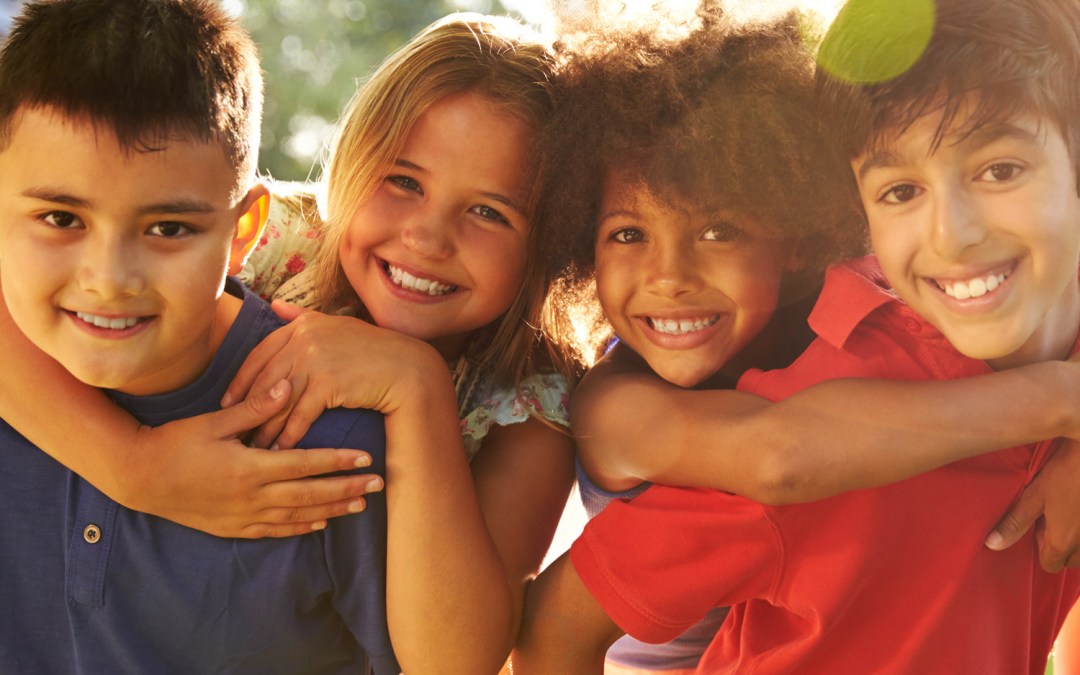The past few weeks have been riddled with unconscionable incidents of anti-Black racism and police brutality against Black people in America. Most notably, George Floyd, a 46-year-old unarmed Black man, died after being arrested by police outside a store in Minneapolis, Minnesota, the U.S. The incident was caught on video and circulated online, sparking protests in major cities across the U.S. and Canada. George’s last words “I can’t breathe” have been well-known around the world, darkening our news feeds and escalating our anxiety.
If you have a child, they’ve probably seen some of this coverage – and they probably have questions. Talking about race can be sensitive, and yes, even a bit messy. Choosing whether or not to talk to your kids about race is an option for many parents, but kids are learning and hearing about race regardless of whether parents are talking to them about it. As a parent, how can you shield your children from – and shepherd them through – a world that seems hell-bent on hate. How can you use this as an opportunity to teach your children about anti-Black racism and empower them to be forces for good?
We believe that not shying away from those conversations is the first step in raising an anti-racist child. But how should parents talk with their children about all they’re seeing and experiencing right now? This article will get you some good advice.
Age-appropriate, open and ongoing discussion
For some families, especially Asian families, talking about race is a subject that can be difficult to discuss. But for everyone, it’s an incredibly important conversation and shouldn’t be avoided. “Why is Amy’s hair in braids and frizzy and not long and smooth like everyone else?” Why is that man in a wheelchair?” “How did Harry get two mommies?”
As early as age 2, according to research, children begin to take note of differences in other people. These preschool years mark your child’s first introduction to the characteristics that have long grouped and divided humans: race, ethnicity, gender, and physical ability.
From the curl in her hair to the color of her eyes and skin to the games she prefers during playtime, your child is discovering the similarities and differences she shares with others in her world.
During the preschool years, parents have perhaps the greatest impact on your child’s perceptions and attitudes about difference than at any other time in her childhood. The manner in which you treat and discuss others based on similarity and difference – and the manner in which you respond to your child’s natural curiosity about these matters – provides the blueprint for her reactions to them.
Seizing these moments as learning opportunities, rather than embarrassing moments to be hushed or ignored, can help your child get past stereotypes and prejudicial images and into a deeper understanding of the world around her.
Experts say honest and age-appropriate dialogue about these issues is the best approach. There are ways to make these discussions about racism appropriate for your child’s age. However, only offer the amount of information they will be able to understand for their age. If they’re younger, start simple. For example, when discussing Floyd’s death with a young child, leave the violence out of the discussion and stick to the facts: Floyd was mistreated because of the color of his skin.
Use the concept of fairness
If you spend time with young children on a regular basis, then you know that they are very into what is fair and what is not fair! You can harness this keen sense of justice to help explain that the patterns that they see are absolutely unfair, as well as to engage your children in seeking to correct these wrongs. Children are already noticing patterns in the world around them and this is your opportunity to help them think critically about what they’re seeing, rather than accepting those things as “rules.”

You can say, for example, “there are people who are not liked just because of what they look like”. This is a very simple concept for a five- or six-year-olds to understand. Kids understand fairness. Start by appealing to your child’s sense of right and wrong, and go from there. As your children grow older, add in the historical context. Your child’s understanding of race will continually evolve, so leave the conversation open as they age. Ultimately, this is only the beginning of what should be a lifelong education about race relations and anti-Black racism, experts say.
Set yourself as an example
As parents, we are our kids’ first teachers. Talking to your child about the importance of embracing difference and treating others with respect is essential, but it’s not enough. Your actions, both subtle and overt, are what she will emulate. If you want to raise socially aware children, keep the phrase “actions speak louder than words” in mind.
If you say something is important, but your children don’t see you behaving in a way that matches your assertion, they know it’s not actually very important to you. For example, if you say it’s important to have a diverse group of friends but your children don’t see a diverse group of people coming over to your home, they know you are not making it a priority in your life, so why should they? This also holds true for things like choosing to consume media that counter racial stereotypes or speaking out against racial inequities. We can tell children that these things are important, but we must also model that behavior for them. One way to do that is acknowledging issues of race and racism in forthright, thoughtful, and respectful ways.
You can also show them that it’s OK to not have all of the answers all of the time; if they bring a question to you about race, racism or racialized inequities that you are not sure how to answer, tell them you think it is an excellent question and is something you wish you understood better, too. Then, depending upon their age, you may wish to research the question and come back with your findings later, or you can even research together. Either way, you are modeling an open, thoughtful, and respectful engagement of difficult issues, rather than shutting down the conversation.
If your child says or does something indicating bias or prejudice, don’t meet the action with silence. Silence indicates acceptance, and a simple command – “Don’t say that” – is not enough. First try to find the root of the action or comment: “What made you say that about Sam?” Then, explain why the action or comment was unacceptable. After all, while conversations are crucial, our children will inevitably learn most from the examples we set for them.
Introduce diversity to different aspects of your life
In order for kids to embrace antiracist ideas, they need to be exposed to people who are different from them. If their friend group looks a little too similar, it might be time to encourage a little diversity at those playdates. Your kids are already thinking about race, even if you’ve never talked to them about it. “From an early age, children are making sense of the world around them. People have a meaning of what different skin colour means based on what they see at home, on TV”, said York University professor Carl James. If your child has little exposure to people who don’t look or live like her, experts advise bringing the world home: Study other cultures together by eating their foods and watching their films. Look for everyday activities that can serve as springboards for discussion. School-age children respond better to lessons that involve real-life examples than artificial or staged discussions about issues.

Discuss differences openly and highlight diversity by choosing picture books, toys, games and videos that feature diverse characters in positive, non stereotypical roles. Make sure your home library has books with black people, tolerance, fairness and kindness at the center of the stories. You can refer to our list of The Best Books to Teach Our Kids to be Kind. Encouraging your child to study another language is also a good option to help kids learn how to embrace differences. A 2014 University of Chicago study revealed that children who hear multiple languages in daily life are more accepting of people whose language differs from their own – which is a stepping-stone toward a broader spirit of acceptance.
Don’t make talking about race a one-time event
You don’t have to set up a time to have a “race talk.” Conversations can naturally occur if you’re paying attention to your child’s statements and staying aware of ways that unconscious bias can slip in. Don’t wait for an incident of racism or bias to occur before discussing such issues with kids. Look critically at stereotypes and race issues in the media and in everyday life. Use current issues from the news, such as the immigration debate or same-sex marriage, as a springboard for discussion. Ask your child what she thinks about the issues. Incorporate discussions about such issues in day-to-day conversations. Racism can be difficult to explain to children, no matter how old they are. Some parents may worry that introducing the concept of racism could be damaging, or scary, especially if that child could be the target of racism, or if the parent has experienced racism themselves. But, instead of staying silent, it’s crucial to empower children. What we do have is time, patience, and the desire to help our children grow into adults who value and honor diversity. “Even though there is unfairness, there have always been people working to change it, and we can be a part of it, too.” This way, you are showing your child racism is possible to untangle, and they can be a part of that solution.
Reference:
https://www.parents.com/parenting/better-parenting/advice/how-to-teach-your-kids-to-fight-hate-an-age-by-age-guide/ https://globalnews.ca/news/7010645/parenting-teaching-kids-black-racism/ https://www.tolerance.org/sites/default/files/general/beyond_golden_rule.pdf
https://www.parenttoolkit.com/social-and-emotional-development/advice/social-awareness/how-to-talk-to-kids-about-race-and-racism
https://www.buzzfeed.com/erinwinkler/tips-for-talking-to-children-about-race-and-racism https://www.nytimes.com/2020/06/02/parenting/kids-books-racism-protest.htm https://centerracialjustice.org/resources/resources-for-talking-about-race-racism-and-racialized-violence-with-kids














